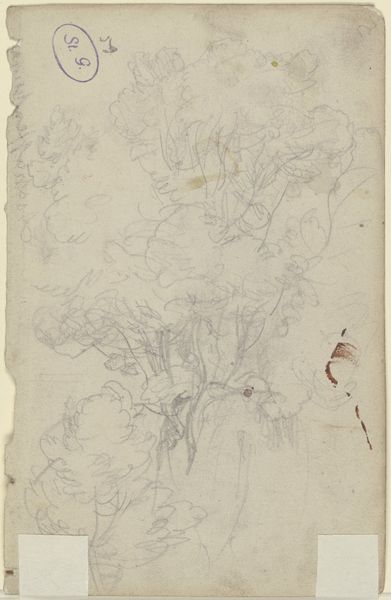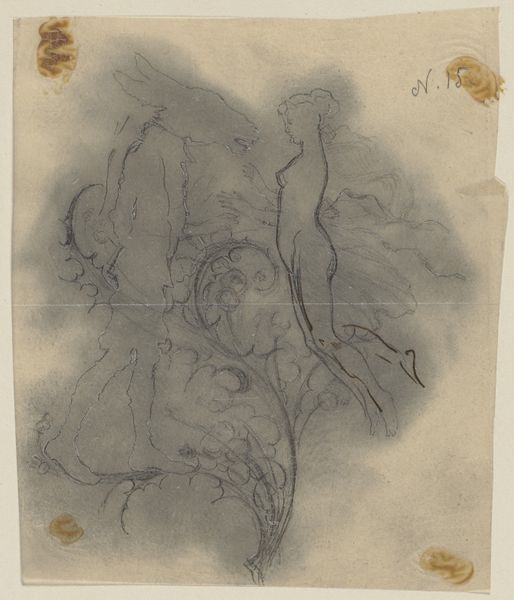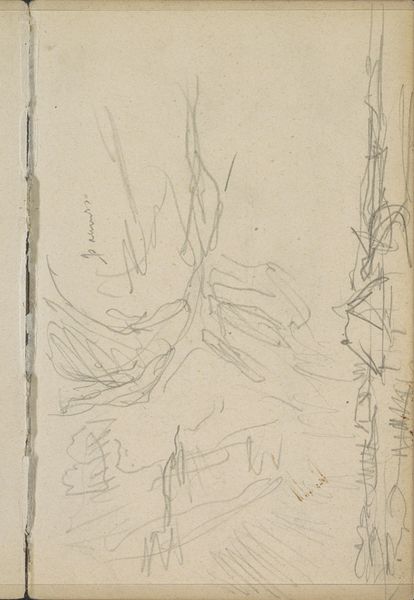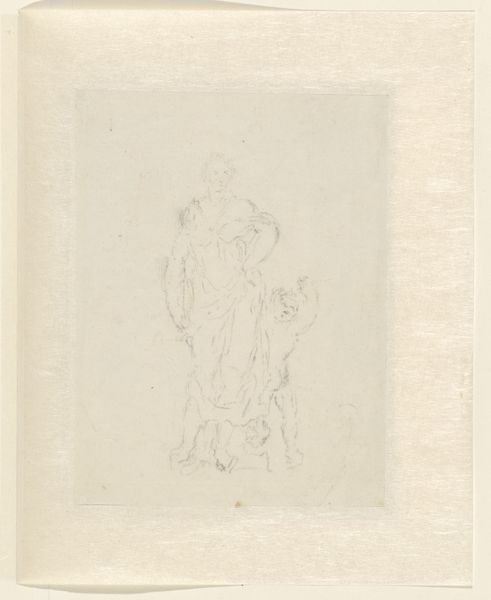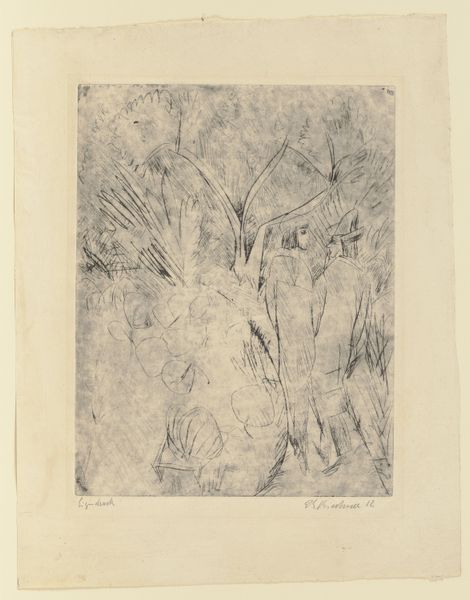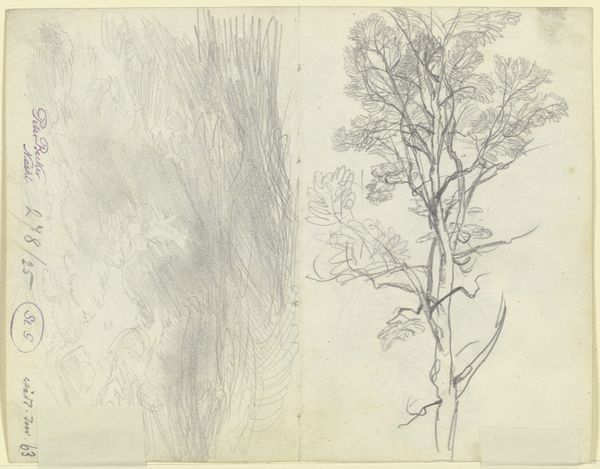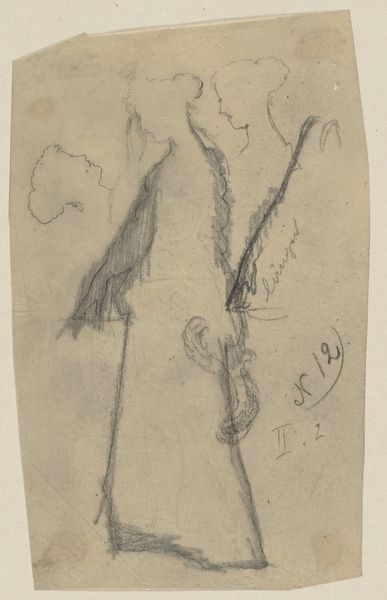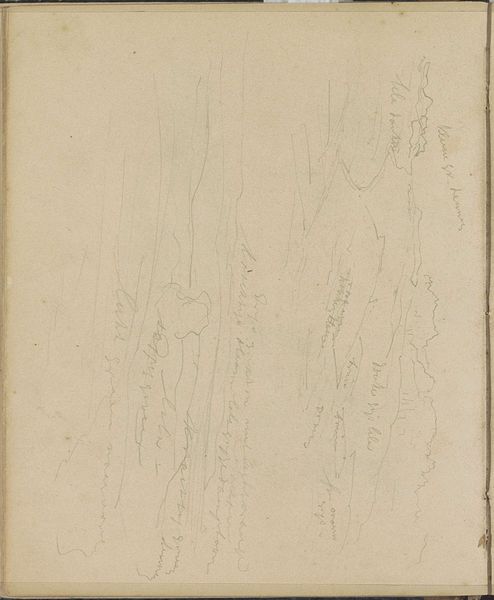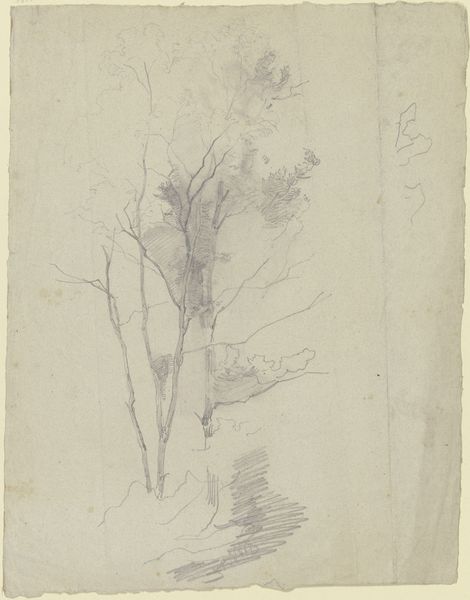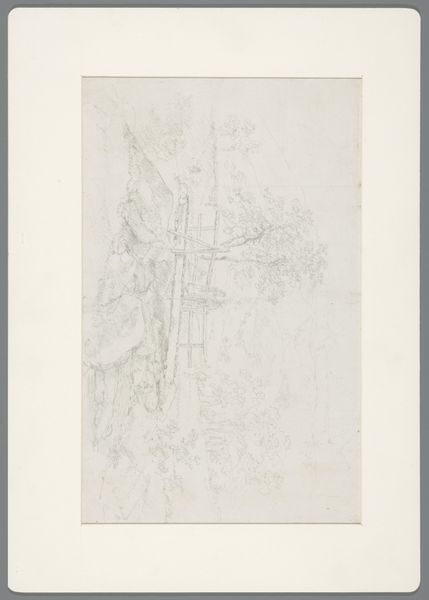
Helena setzt Demetrius nach, zwischen ihnen Blumenranken c. 1867 - 1868
0:00
0:00
Copyright: Public Domain
Curator: This is a pencil drawing by Paul Konewka, dating back to around 1867-1868. The title, "Helena setzt Demetrius nach, zwischen ihnen Blumenranken," translates to "Helena Pursues Demetrius, with Flower tendrils between them." Editor: It’s incredibly faint. The figures almost emerge from the paper like memories, or perhaps a preliminary sketch exploring romantic themes. I'm immediately struck by the delicacy of the line work and how the organic tendrils seem to both connect and separate the figures. Curator: Precisely! Konewka was deeply involved with Romanticism. These ephemeral illustrations are rooted in classical narratives filtered through a 19th-century sensibility. Think of the rising German nationalism, using classical themes to reflect on contemporary concepts of love and pursuit. Editor: Right, but looking closer, the visible strokes emphasize labor. See how each leaf and line contribute to the whole? This goes beyond mere illustration. It’s about crafting an ideal, the deliberate arrangement and pressure. Curator: Interesting point, but remember these drawings became widely popular as templates. So we need to account for a commercialized and accessible take on these classical themes to wider audiences. It brings high art themes to average people who bought illustrations. Editor: Which also speaks to the material conditions! These pieces, reproducible, democratize ownership and ideas through mechanical production, quite relevant in the mid 19th century. Curator: Absolutely. Konewka and others used emerging reproductive technologies to circulate imagery that reflected cultural values and historical consciousness of that time, as did illustrators like Gustav Doré who reached international acclaim by publishing his artwork as prints and plates within mass circulated journals and books. Editor: Still, I see the labor most vividly, in the sheer accumulation of graphite on paper to convey a powerful sense of yearning. Perhaps the flower tendrils act as metaphors for both union and confinement. This is so more than just cultural history being sold off as nice little reproducible images. Curator: True enough, but one lens informs the other, don't you think? Looking at the institutional networks, from artists workshops, commercial galleries to bourgeois sitting rooms offers the social relevance here. Editor: Perhaps. By the means of drawing with such fine tools. These pencil markings bring in so much nuance. I see how it creates complex meanings of longing and loss of human labor during times when industrial productions made many feel insecure about the industrial world that grew so rapidly around them. Curator: It makes us re-evaluate those mass distributed pictures. Editor: Indeed! Each stroke contains echoes of human aspiration.
Comments
No comments
Be the first to comment and join the conversation on the ultimate creative platform.
